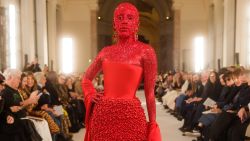London was once considered the city to skip during the month-long marathon of fashion weeks, but it’s worked hard to lose its outsider status.
The five-day event may still face stiff competition from the rest of the “big four” – namely Milan, Paris and New York – but this year it delivered a series of especially impressive collections that blended eccentricity, intelligence and – perhaps inevitably – politics.
This time last year, designers most likely thought it would be their last chance to showcase collections at London Fashion Week with Britain as part of the European Union. Yet, Brexit is still looming.
This seems to have inspired a somewhat sober mood, with designers using the runway as a platform to voice bigger ideas around political tension, identity and the tremendous changes taking place in British – and global – culture.
Here are the key takeaways from London Fashion Week.
London Fashion Week highlights
Fashion in the age of Brexit
Fashion can serve as both a form of escapism and a lens through which we examine change in society. The latter shone through this year in London where, hidden between beautiful clothes and runway shows, designers used fashion to subtly reveal their attitudes towards British and European identity.
This was even true for designers not known for politics, such as Simone Rocha, who weaves everything from her new role as a mother to her Irish-Chinese heritage into her work.
“I do keep my politics and my creativity separate but I’m very proud of being Irish and being European, so it’s fitting to do something that I’m really proud of and connected to,” Rocha told journalists after her show at Alexandra Palace in North London.
With issues surrounding the Irish border at the heart of Brexit wrangling, Rocha shone a light on Wrenboys, groups of young boys who hunted wrens on St. Stephen’s Day, December 26, in Irish folklore. They’d spend the day dancing, singing and knocking on doors asking for money.
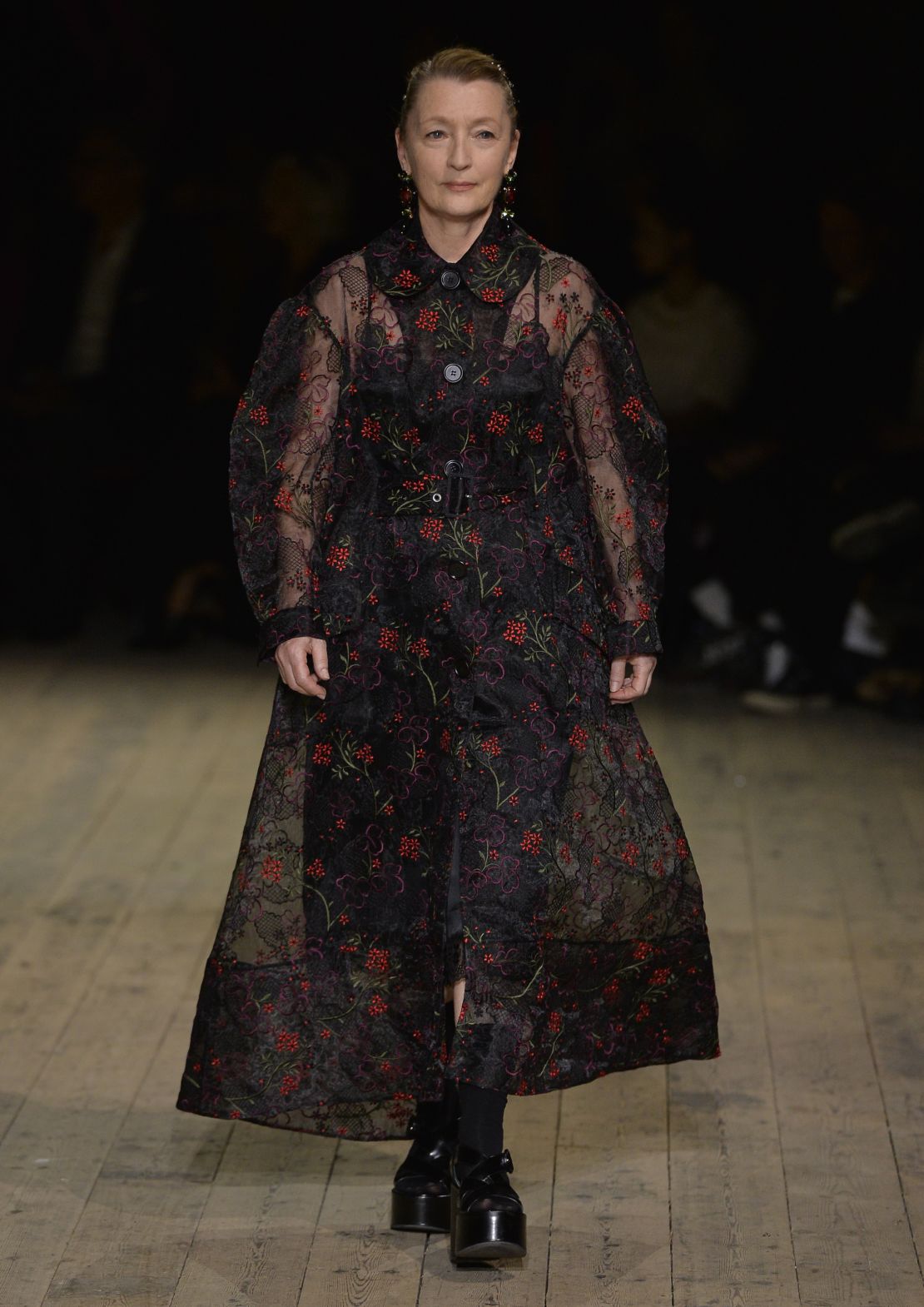
Rocha’s homage took the form of sharply tailored trousers, crombies and peacoats in heavy brocades and raffia-plaited accessories, from broaches to bags. The old Irish style complemented the femininity of the more voluptuous silhouettes found in layered tulle dresses and embellished outerwear.
Elsewhere, Burberry designer Ricardo Tisci continues to take on the difficult task of driving a heritage British brand forward in the age of Brexit. At last season’s London Fashion Week, he alluded to a fractured Britain, even sending a model down the runway sporting the country’s flag. This time around, he delved deep into archives to take inspiration from the brand’s Victorian roots.
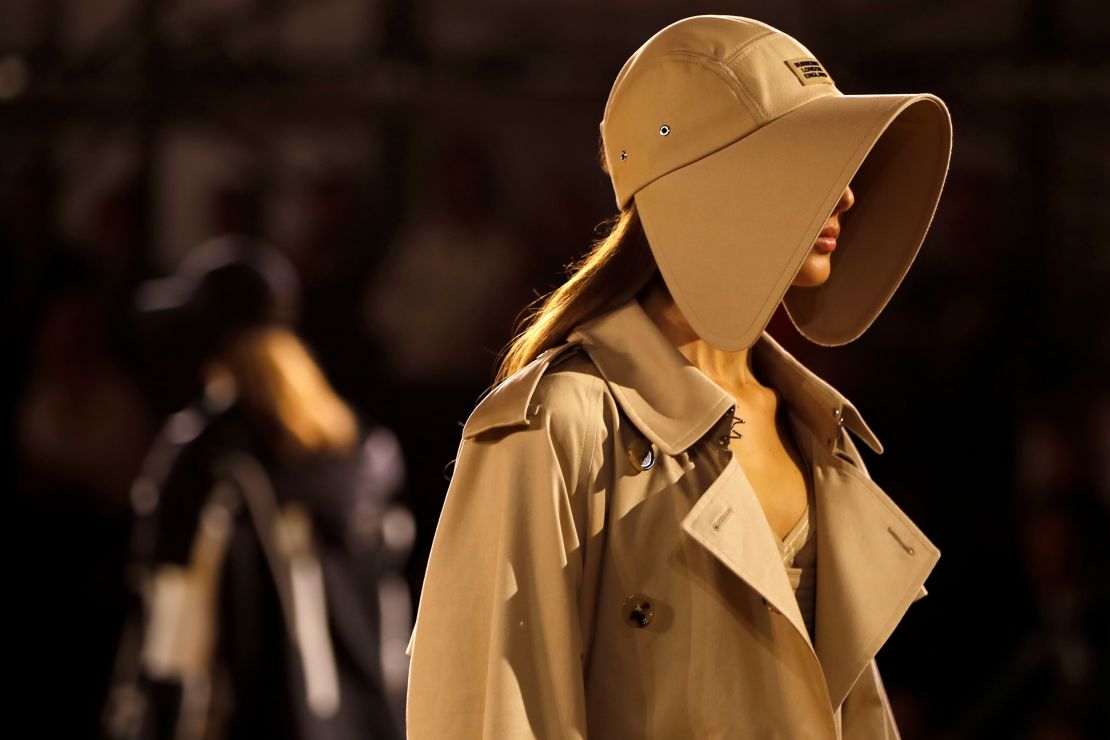
The resulting collection – Tisci’s third for the brand since joining last year – eradicated the once-ubiquitous Burberry check pattern. He replaced it with hand-sketched animal prints, streetwear staples embellished with crystal detailing and the sensual modern tailoring seen in sculpted sleeves, cinched blazers and corseted dresses that nodded to his Italian sensibilities. The label’s iconic trench coat was reinterpreted with silk panels, taking out the rigidity and giving it a renewed sexiness.
Meanwhile, Richard Quinn, known for his sculptural silhouettes, celebrated Britishness with a fantastical collection that continued to push boundaries in textiles and design with aerodynamic creations produced in his London studio. He presented his designs in an old sports hall in East London, complete with a live orchestra and choir performing Handel’s “Zadok the Priest” and “Memory” by Andrew Lloyd Webber.
Female muses with political stances
Designers have a long tradition of choosing strong women as muses, but this season saw a number of notable nods to women – past and present – who embody feminist views.
Turkish fashion designer Bora Aksu paid tribute to Persian princess Taj Saltaneh, a strong advocate of women’s rights in the early 20th century. He paraded a series of delicately feminine dresses in layered lace and tulle, which he toughened using block-heeled shoes and boots, tailored cocoon coats and trousers.
Elsewhere, Michael Halpern of Halpern presented glamorous, floor-sweeping eveningwear inspired by singer and actress Barbra Streisand, a well-known supporter of the Democratic party whose activism dates back to the early 1960s.
“What we’re about is giving you the ability to escape a bit and being able to put a sparkly frock on at the end of the day is something that gives you a bit of break from watching the 24-hour news cycle. And this type of clothing is a colorful protest to make things a bit nicer and to be a bit nicer to each other,” Halpern said.
Erdem Moralioglu took his narrative from Tina Modotti, a girl from an Italian village who rose to become a silent movie star, documentary photographer and political agent. Her exploits in Mexico served as the basis for a collection that featured tiered dresses in jacquard and border anglais, silk scarves reinterpreted as ponchos and flat wide-brimmed hats tied down with scarves.
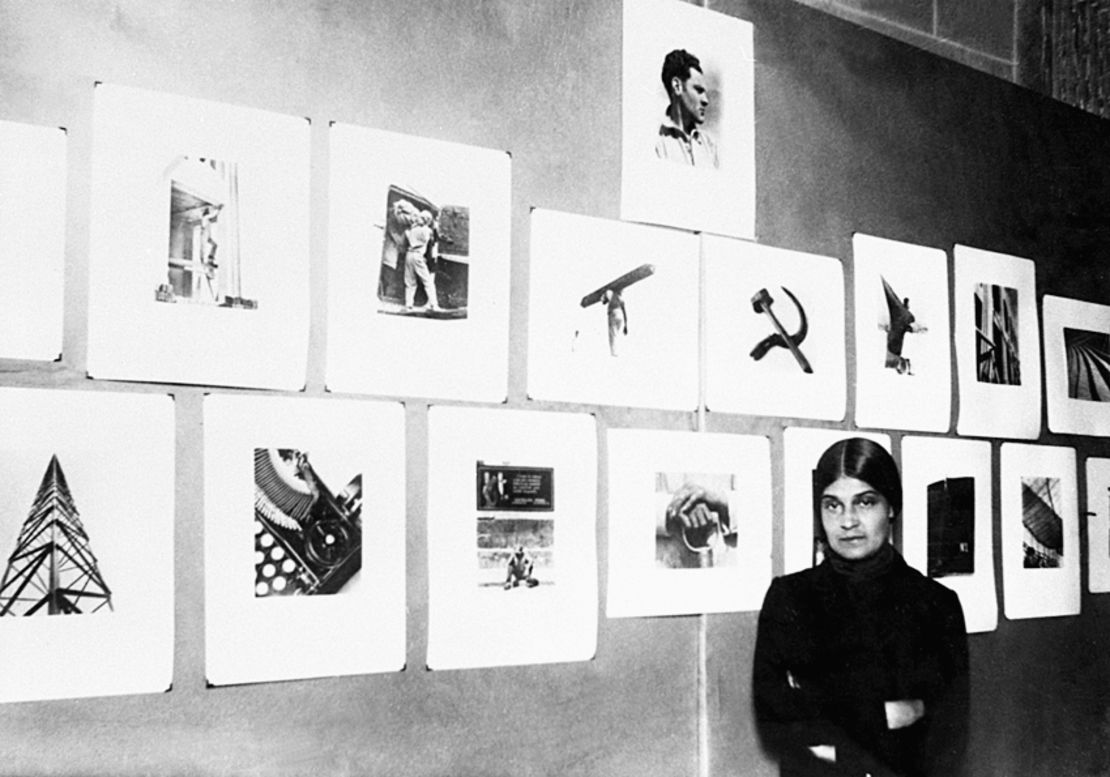
“I’m fascinated by all the facets of her, and one of her facets was her politics – I was very seduced by her,” the Erdem founder said backstage.
Diversity and inclusivity are still buzzwords
London Fashion Week has a reputation for supporting diversity, but this season inclusivity was pushed forward in new and worthwhile ways.
Fashion duo Marques’Almeida invited friends, family and fans of the brand to walk the show rather than agency models. The move seemed to embody their specific brand of girl power, which is built on a foundation of strong-willed irreverence and a community of supporters akin to a tribe.
“We started meeting all these M-A girls and boys and they became inspiring for our work,” explained Marta Marques, referring to the brand’s initials. “We wanted real girls to feel their best and empowered. We feel like our mission, among other things, is to make fashion more diverse and inclusive, and more loving and accepting.”
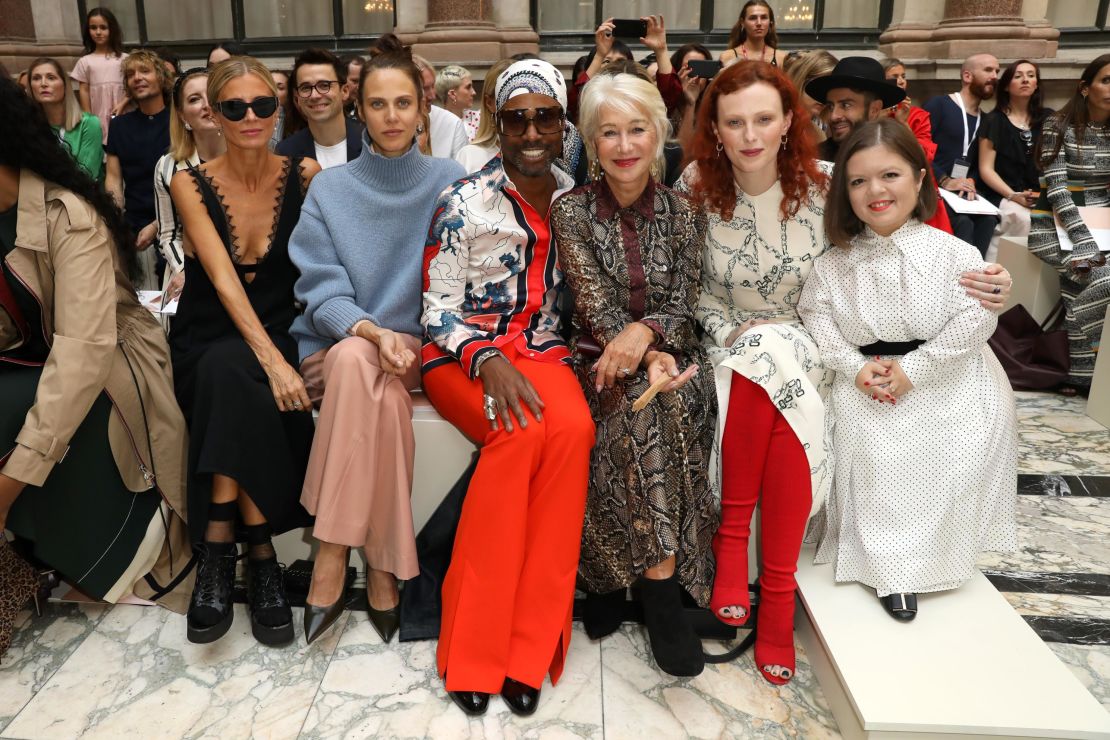
Rocha also championed diversity this season by casting Irish actresses Olwen Fouéré, Valene Kane, Jessica Buckley and Tia Bannon, as well as model Karen Elson, who at 40 years old shared the runway with models more than half her age.
Inclusivity went beyond casting, though. This season, the British Fashion Council (BFC) launched a new format that opened up the catwalk to the public, somewhat eroding the exclusivity of fashion shows, which traditionally serve as trade events for the industry. Standard tickets for the experience, which included installations, panels and shows by House of Holland and Alexa Chung’s eponymous label, cost £135 ($166).
The future is in the past
The past has always been a source of inspiration for designers. But this season it was also a source of comfort, as several labels gave clear nods to past decades.
Roberta Einer’s dreamy collection took inspiration from long summers spent lounging in seaside villas in the mid-century, post-war era. She interpreted this through the lens of her own childhood nostalgia by reimagining her favorite summer outfits – fluid dresses in pastel shades punctuated with neon detailing, flowy silk pants and watercolor prints.
House of Holland merged 1970s disco and 1990s rave culture with summer lurex in neon colorways, pussybow neckties and tracksuits. “It’s a real exploration of those two periods because I see real similarities between them and now,” founder Henry Holland said of his collection. “It’s a period in history where people just didn’t know what to do with the state of the world and just (went) out and partied to forget their cares.”
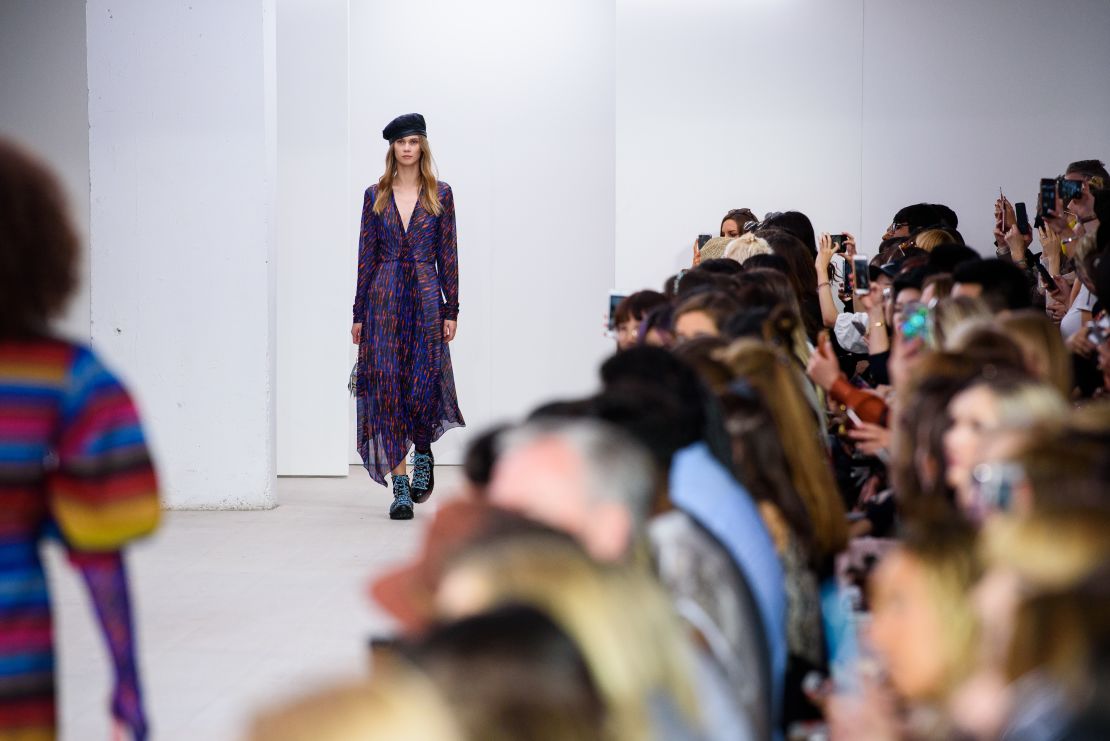
Holland said he and his friends felt disenfranchised by the political chaos in the world. “Our minds are blown and we don’t know what else to do but have an amazing night for a few hours,” he said.
Sustainability and the political
Away from the shows and runways, protesters seized the chance to spread their message about fashion’s role in the climate crisis. Protest group Extinction Rebellion staged a “die in” outside the BFC Show space, featuring activists covered in fake blood.
They held signs featuring slogans like “Fashion = Ecocide” and “The ugly truth about fashion,” yelling at guests waiting in line to enter the venue.
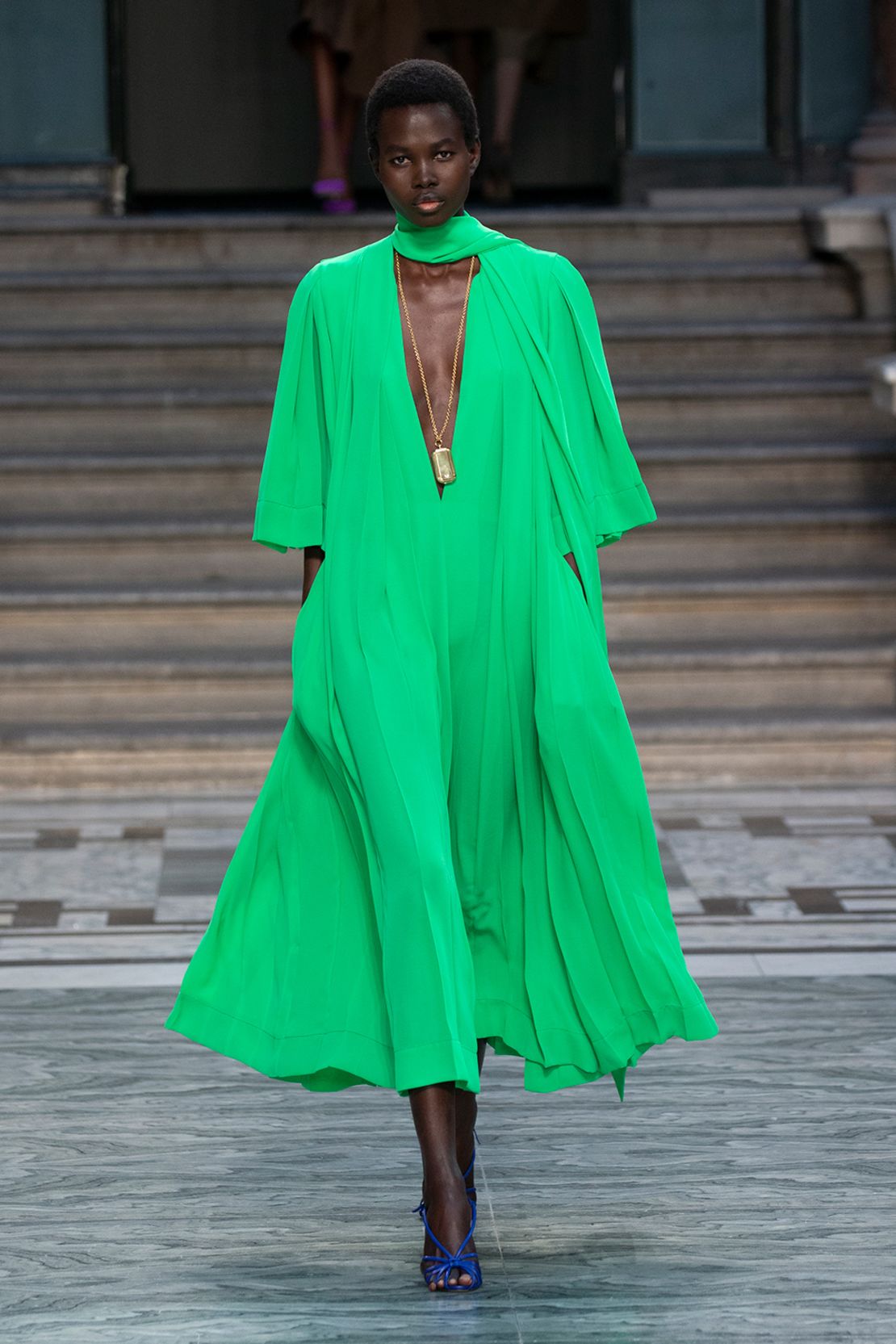
One of their most visible efforts was protesting outside the Victoria Beckham show, where high-profile guests including editor Anna Wintour and actors Helen Mirren and Billy Porter were in attendance.
The fashion industry is far from achieving sustainability, and its efforts to reduce their environmental impact have actually slowed down in the last year, according to a new report published by Global Fashion Agenda, Boston Consulting Group and Sustainable Apparel Coalition.
As a whole, fashion emits more greenhouse gases than the sum of all commercial flights and maritime shipping, according to a report by the Ellen MacArthur Foundation.
Among the positive signals is the fact that several high-profile brands are designing their shows to be carbon-neutral, a trend inaugurated by Gabriela Hearst in New York last week, followed up by Burberry in London this week and embraced by Gucci for its upcoming show in Milan – showing that big labels are starting to acknowledge the fact that the sustainability factor is at least as important as the wow factor.
For more on London Fashion Week, watch the video above.


